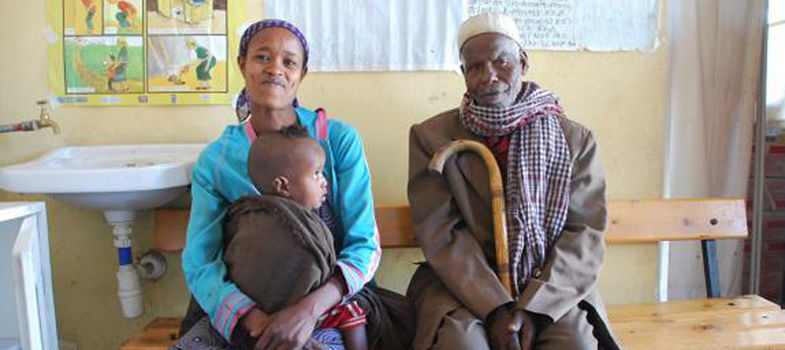20.3.4 Pre-referral treatment in an emergency
Emergency treatment of patients in shock includes starting an intravenous (IV) infusion, that is delivering a sterile fluid called Normal Saline or Ringer’s Lactate solution, directly into a vein to replace the blood fluids and salts that are being lost through heavy bleeding. You will learn the theory of how to do this in Study Session 22 of this Module, and in your practical skills training. As soon as the IV infusion is set up, you must make an immediate referral of the woman to the nearest health facility.

During transport make sure you position the woman appropriately with her head flat (do not use a pillow) and her legs raised and supported (see Figure 20.3). This position helps to keep her blood pressure from falling even lower. If possible, you should accompany her to the next level health facility to maintain the IV infusion and keep the bag of IV fluid held above her. If you cannot go with her, explain the importance to whoever accompanies her of keeping the woman and the fluid bag in the suggested positions; also tell them how to close the IV tubing when the bag of fluid has completely drained. Ideally, send a healthy person with her who could act as a blood donor if she needs a transfusion of blood when she gets to the health facility.
Make sure you write a referral note that covers all the essential details.
Recall what these details are (you learned this in Study Session 13).
A referral note should include the patient’s name, age and address; any medical or personal history that is relevant to her current condition; a clear description of her signs and symptoms; the details of any treatment you have performed; and your reasons for referring her to the health facility. Remember to sign and date the note and say how you can be contacted so you can follow-up the patient afterwards.
20.3.3 Follow-up care after an abortion
